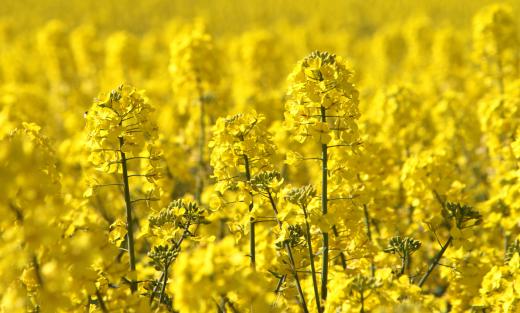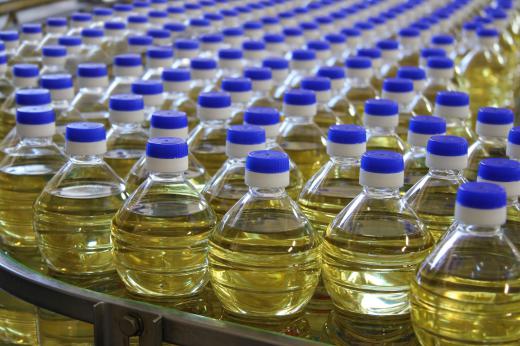A palm oil plantation produces varieties of trees that produce fruit containing oil used in soaps, food, cosmetics, and as biofuel. Indonesia and Malaysia produce most of the palm oil harvested, but plantations can also be found in the Amazon and Africa. The expansion of these farms sparks controversy among environmental groups because tropical forests are typically cleared and drained to create a palm oil plantation.
A palm tree farmer might sell the fruit to the biofuel industry as a clean source of energy. When palm oil is mixed with diesel, it produces a fuel free of carbon dioxide when burned in engines. This type of biofuel is considered one of the cheapest to produce, but some opponents of its production claim the damage to rain forests outweighs the value of palm oil fuel.

Palm oil is the second most consumed oil in the food industry, with soybean oil representing the most popular edible oil. A palm tree plantation might sell the product to food manufacturers that make crackers, chips, and other snack foods. This oil also goes into laundry soaps and bath products. Some plantations contain millions of trees, providing a lucrative income in underdeveloped areas.

A farmer typically clears and drains peat land in a tropical forest to create a palm oil plantation, and might burn stumps and peat left behind. This species of palm requires a very hot climate with plenty of rain to flourish. Trees also need deep soil rich in minerals with good drainage. The climate and soil in a tropical rain forest makes an ideal location for a successful palm tree plantation.

A farmer typically plants seedlings after the palms have about 15 leaves. Plants grow female flowers and male flowers, with the male pollen fertilizing female flowers, which turn into clusters of fruit at the ends of the leaves. Palm oil trees contain trunks and leaves, but no branches. Fruit is ready to harvest after three to four years, when it turns red and begins dropping from the trees. Plantation workers commonly climb the trunks and use sickles, machetes, or chisels to remove the fruit.
Fruit produced in a palm oil plantation consists of pulp surrounding a seed. The pulp is crushed to extract palm oil, while the kernel contains palm kernel oil. A palm oil farmer aims to produce fruit with thin shells, large kernels, and lots of pulp to get the most oil from the plant. The fruit is sent to oil mills for extraction. Some farmers feed shells from the fruit to cattle as a high-protein supplement.
Peat serves as a sponge to absorb carbon dioxide when it is moist, but once a peat bog is drained, the carbon dioxide is released into the atmosphere. Fires set to clear land also contribute to harmful emissions. Environmental groups also express concern about the loss of wildlife habitat when tropical forests disappear. As controversy grew over these plantations, efforts increased to create sustainable palm oil plantations. Some plantations created nature reserves sown with rare species to address environmental impacts of palm oil plantations.
